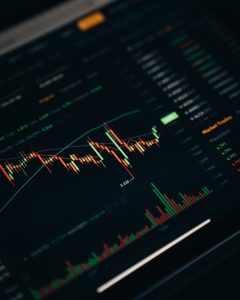Supply and demand are two of the most important concepts in the forex market. Understanding these concepts and how they relate to the forex market can help traders make more informed decisions about when to buy or sell currency pairs. In this article, we will explain how to calculate supply and demand in forex.
Supply and demand are the forces that determine the price of a currency pair in the forex market. When there is more demand for a currency than there is supply, the price of that currency will go up. Conversely, when there is more supply than there is demand, the price of that currency will go down.
To understand how to calculate supply and demand in forex, it is important to first understand what causes these forces to move in the first place. There are many factors that can influence supply and demand in the forex market, but some of the most important include:
1. Economic indicators: Economic indicators such as GDP, inflation, and employment figures can have a significant impact on supply and demand in the forex market. For example, if a country’s GDP is growing rapidly, this could increase demand for that country’s currency as investors seek to invest in the country’s economy.
2. Central bank policy: Central banks can also have a significant impact on supply and demand in the forex market through their monetary policy decisions. For example, if a central bank raises interest rates, this could increase demand for that country’s currency as investors seek to earn higher returns on their investments.
3. Political events: Political events such as elections or geopolitical tensions can also have an impact on supply and demand in the forex market. For example, if there is political instability in a country, this could decrease demand for that country’s currency as investors become more risk-averse.
Now that we have a better understanding of what can influence supply and demand in the forex market, let’s look at some specific methods for calculating these forces.
One popular method for calculating supply and demand in forex is to use technical analysis. Technical analysis involves using charts and other tools to identify trends and patterns in price movements. By studying these trends and patterns, traders can try to identify areas where supply or demand may be changing.
For example, if a currency pair is trading in a range and then breaks out to the upside, this could suggest that demand is increasing and supply is decreasing. On the other hand, if a currency pair is trading in a range and then breaks down to the downside, this could suggest that supply is increasing and demand is decreasing.
Another method for calculating supply and demand in forex is to use fundamental analysis. Fundamental analysis involves analyzing economic and political factors that can influence supply and demand in the forex market. By studying these factors, traders can try to anticipate changes in supply and demand before they occur.
For example, if a country’s economic indicators are showing signs of weakness, this could suggest that supply may be increasing and demand may be decreasing. Conversely, if a country’s economic indicators are showing signs of strength, this could suggest that demand may be increasing and supply may be decreasing.
In addition to technical and fundamental analysis, traders can also use various indicators and oscillators to help them identify changes in supply and demand. Some popular indicators and oscillators include the Relative Strength Index (RSI), Moving Average Convergence Divergence (MACD), and the Stochastic Oscillator.
Ultimately, the key to successfully calculating supply and demand in forex is to stay informed about the various economic, political, and market factors that can influence these forces. By doing so, traders can make more informed decisions about when to buy or sell currency pairs based on their understanding of supply and demand dynamics.






